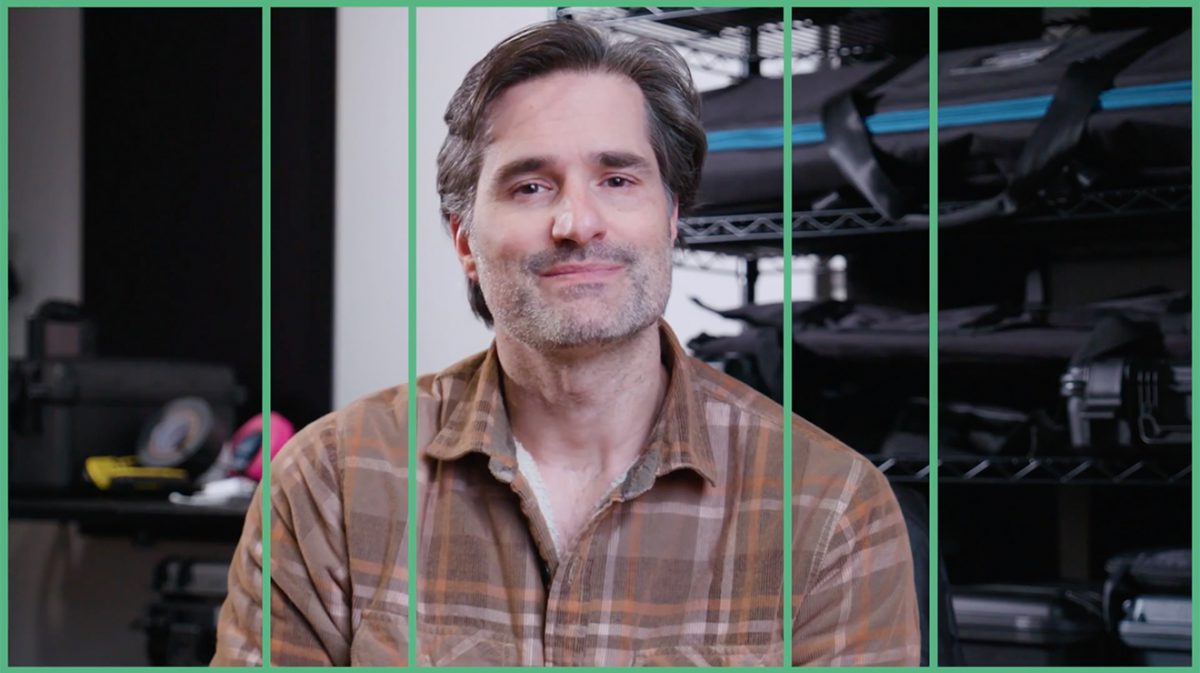Marketing videos are rarely shared in just one place. Most are published not just on your website, but across a multitude of social platforms, each with different aspect ratios, resolution limits, and time limits.
So, how can you make sure your video will work no matter where it’s being shared without quadrupling your workload?
In this episode of our “How To Video” series, we’re taking a look at how to plan your video shoot for optimal results on social media.
Join Nick LaClair, Creative Director at SproutVideo, as he takes you through four simple tips to make the most out of your next marketing video project.
Shooting Social Video
To engage viewers, it’s ideal to optimize multiple versions of your video for as many different platforms as needed. You can achieve this in an efficient manner with these four proactive steps.
1. Plan to Crop
With so many different video platforms, there are a ton of aspect ratios to keep track of. Shooting 16:9 and hoping that a crop will work is not ideal. You can usually see right away when videos do this because they’re cropped in slightly too close, like the two examples below.

There are two main options: you can either plan your videos with cropping in mind to allow for better composition, or shoot a different video for each platform. The latter would be very time-consuming, but luckily, the former is easier than you think.
Shoot in 4K
First, shooting in 4K can be very helpful. While 4K is overkill for just about anything except TV or cinema, it can be your saving grace when shooting for social. The 4K resolution will give you the ability to crop for any platform.
For instance, Facebook’s max resolution is 1280p x 720p, and Instagram is 1080p x 1080p. Since 4K is 3840p x 2160p, it has those formats covered with room to spare.
Refer to this guide from SproutSocial to stay current on the ever-changing social video standards: Always Up-to-Date Guide to Social Media Video Specs
Use a Wide Shot
Secondly, when planning to crop, you’ll need to use a wide shot as opposed to a close-up. This will allow you to fit more of your subject in the frame. Then, when you crop your video in post-production, you’ll have more to work with. Otherwise, you run the risk of cutting part of your subject out of the frame.
Some cameras or external monitors will allow you to set custom markers or frame lines so you can see exactly where the crop will go. If your camera doesn’t have that option, pieces of tape on your viewfinder or external monitor will allow you to preview the crop.
Below is a table of measurements for your reference to help you create tape guides on your monitor.
| SIZE (in.) | 1×1 | 9:16 | |
| 7 | 1 9/16 | 2 5/16 | common ext monitor |
| 5 | 1 ⅛ | 1 11/16 | common ext monitor |
| 4 | ⅞ | 1 ⅜ | C300 |
| 3.5 | ¾ | 1 3/16 | FS7 |
| 3 | 11/16 | 1 | DSLR/Mirrorless |
Framing your shot for various aspect ratios is a great chance to get imaginative with your shot. Have fun with it and try out new things that you generally might not do if you were shooting just 16:9.
2. Maximize Your Depth of Field
Our second tip deals with utilizing depth of field to improve the cinematic look of your video. Here’s why that matters.
A shallow depth of field will keep the subject looking crisp, while the background will appear blurry. This makes your footage look professional and cinematic, which can help it stand out when posting on social. Take a look at the example below.

Choose a Camera With a Large Sensor
Consider the relationship between sensor size and the depth of field. As a general rule, the larger the sensor size, the shallower the depth of field will be. Try to choose a camera with a larger sensor to help improve the final output in different aspect ratios.
Use a Prime Lens
When choosing a lens for social video, we recommend prime lenses over zoom lenses. Prime lenses allow you to open the aperture wider, which lets in more light, and further enhances the shallower depth of field.
Especially when cropping your footage, the lens choice can make a big difference. The combination of a large sensor size and a fast prime lens is ideal for creating that cinematic look after a vertical 9:16 crop.
For a full comparison on prime and zoom lenses, check out our post Optimal Optics: a Primer on Lenses.
3. Be Conscious of Video Length
On social media, shorter is generally better for most content types. Part of that is down to audience preferences on the platform, while some platforms have technical constraints on the length your videos can be.
Adding to the difficulty, new platforms and new guidelines emerge all the time. By keeping your video short, you’ll be more likely to be able to share it wherever you’d like without further editing.
Instead of trying to cram all your ideas down to a minute or so, start off by preparing your script to match the ideal time limit. Use the chart below as a reference when writing your script.
| Speed | Words Per Minute |
| Slow | 110 wpm |
| Normal | 135 wpm |
| Fast | 160 wpm |
Keep in mind that each person’s manner of speaking is unique. Try timing yourself to find “your number,” then use it for planning future scripts. You’ll improve your timing with practice.
If that still isn’t enough, try different editing techniques to shorten your video. For instance, you can cut out dead space or shorten your transitions or intro’s and outro’s.
4. Create a Standalone Teaser
If the video you’re planning is on a bigger scale, and you want your audience to see it as intended – with no cropping or time limits – consider creating a standalone teaser. Similar to a movie trailer, a standalone teaser is a great way to hook your audience and keep them wanting more.
Your teaser can simply introduce the full video, and tell your audience where and when they can see it. Take a look at this simple teaser script that could be used for the video above.
Hi, this is Nick LaClair, Creative Director here at SproutVideo. Don’t miss our next episode of How To Video, where I’ll give you some tips on shooting for multiple social platforms. Click the link to check it out.
This quick and concise message is very easy to film when you’re making the rest of your video content.
Alternatively, creating a more vague teaser is a great way to stir up some buzz for your video. You’ve probably seen this technique used by tech companies leading up to a new product launch.
For example, below is the teaser video Samsung used to introduce the new Galaxy phones. They shared this video on social media up until the launch, then published the full video on sites like YouTube, Facebook, and traditional TV advertising.
Granted, this sort of teaser can be more work, but the results might be worth it.
With these four tips, you can be sure that your next video will shine no matter which social platform you publish it on. If you have any more tips for shooting for social, let us know in the comments below.








